For the first time ever, this summer the UK recorded temperatures in excess of 40°C. Parts of Wennington, a village in East London were consumed by fire. If ever there was a moment to wake up and change how we live, it is now. If we don’t we are individually and collectively committing, in the words this of UN chief Antonio Guterres, ‘collective suicide’. That’s a tough statement to digest, but don’t ignore it. Our systems (both ecological and economic) are more vulnerable than we care to think and straining at the point of breakdown. The war in Ukraine might just be the straw that breaks the global camel’s back.
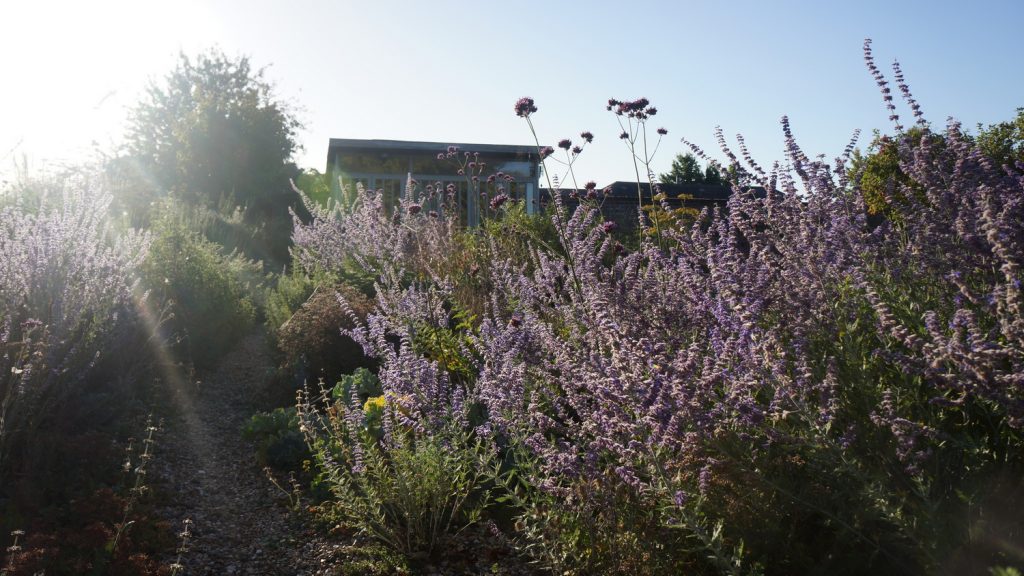
While we lobby, wait and pray for governments the world over to stand up and take action, we must each look to what we can do. Fortunately, there is quite a lot. For this article I’m going to focus on our gardens; there are of course many other things relating to energy, insulation, income and travel that we need to look at. If you are fortunate enough to have a garden, it is probably not well suited to current and future conditions, but you can change that. It’s the one bit of Earth that you can do something with.
As it’s been cruelly hot everywhere, let’s start with temperatures. Those nice big patios and block paved drives increase the temperatures around your house substantially. They act like heat sinks, absorbing heat by day, radiating it out at night. Get rid of them; reduce the size, relocate them away from South and West house faces. Gravel is cooler than paving; lawn is cooler than gravel; long grass is cooler than lawn; multi-layered shrubs and trees are cooler than long grass. Artificial grass is as hot as paving, don’t use it, ever. If you have 80% hardscape and 20% softscape, reverse it. 20% is a good maximum amount to have paved. Make more pergolas for shade, grow grapes and kiwi fruits, not ‘just’ pretty things.
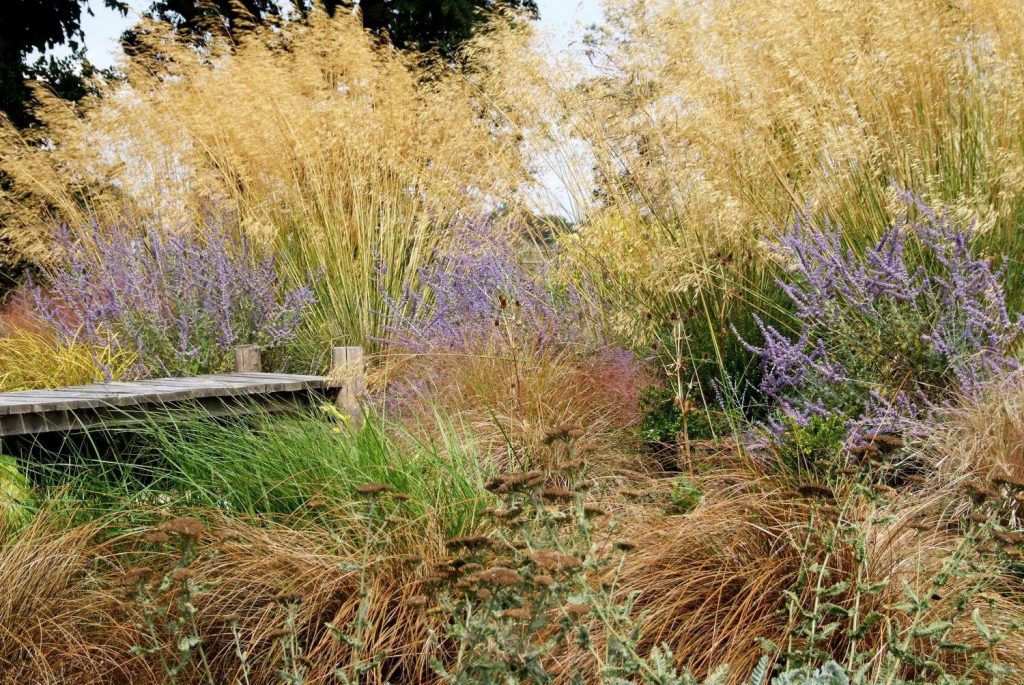
Make your paving permeable. Allow water to recharge your soil, even under the drive or patio, it will help keep the soil cool and increase water availability to plants. Put your gutter downpipes to ground via a rain garden, or store water in large butts and tanks. You know hosepipe bans are coming; they will become the norm, not the exception. We also have to cope with floods, and design for those too. Berms, pools and swales retain and hold water, allowing it to infiltrate the ground slowly.
Think about where to place shade and provide wind protection. You might want shade in the summer but need the solar gain in winter – deciduous trees are great for this. If you want winter insulation from cold winds, plant evergreens. Trees can shelter your house and save on heating or cooling costs. This is about creating benign microclimates, which can make all the difference in weather extremes. How you cover the different bits of land can contribute to the reduction of your house temperature, and the wider urban heat island.
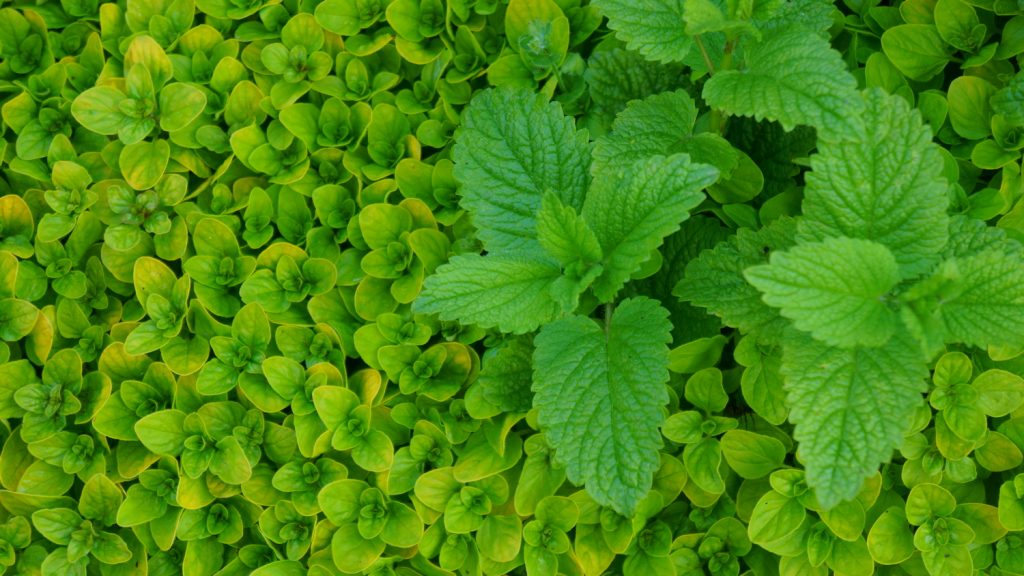
Grow veggies, herbs, fruit and nuts. Anything that gives you a security cushion for when supplies become erratic, which they already are. You might not grow much, but every little helps (ironic misquote). Use heritage seed, not F1 hybrid and save your own for next year. Get a polytunnel or greenhouse (recycle one), sow winter crops. Check out the edible parts of plants you already have, always good to know! Plant perennial veg, edible shrubs.
When choosing plants for the garden, buy species, or varieties that self-seed. They don’t have to be native, adaptive plants are those that will cope with the new and future weather patterns. Get rid of double-flowered things that insects can’t use. Allow plants to self-seed, weed out those in the wrong place. A plant no longer required is just biomass – compost it! Make mulch, be a closed loop. Be active in your garden. Minimise external inputs, be self-sufficient where you can. Don’t buy plants in peat, grow them from seed in your own compost. Nurseries, like many businesses are in for a tough time unless they embrace change in what they do and sell. Value gardeners more. Don’t use chemicals. Ever.
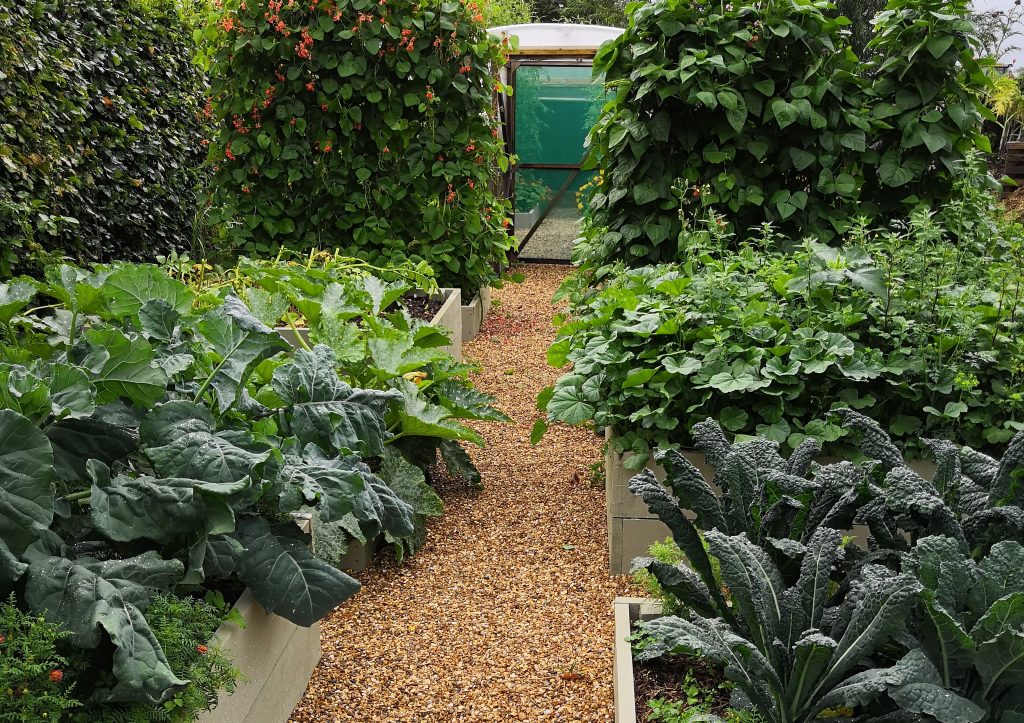
Make gravel gardens. If you break up old paving or sub-base – leave it in the soil and plant Mediterranean herbs and sub-shrubs; they’ll love it! Don’t water your plants, except during establishment. Choose those that will cope. Create novel ecosystems, allow seed to escape. All is change and disruption, give Nature the building blocks it needs to create the next ecosystems. Why? Because we’ve destroyed so much of what was; we can’t go back, thresholds have been passed.
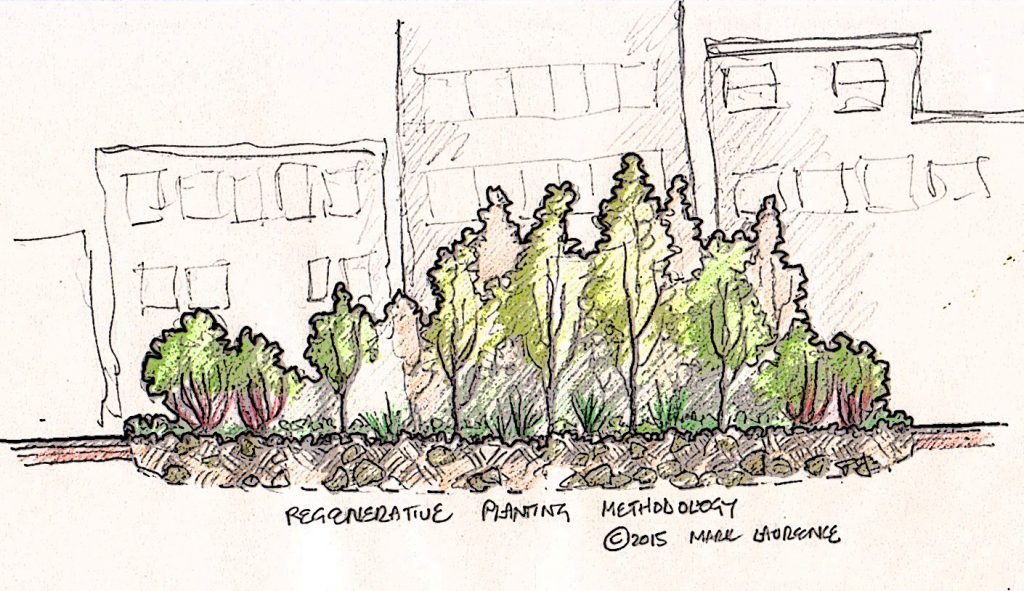
Change how you maintain space. Cut less, especially lawns. Maintain more, garden less. Pollard shrubs and trees and shred them for biomass. Switch to battery tools, but have hand tool back-ups. Have a solar panel and portable power station in your shed.
Don’t be a passive lounge lizard and view the garden as nothing more than eye-candy. Seek your deeper self through Nature. Turn from biophobia to biophilia, you know you want to! Liberate yourself. Be less tidy, abolish the word ‘weeds’. Revere your soil.
This is the future of gardening, there’s a lot to worry about, but your garden can be a place of self-empowerment, and that’s exciting. Go do it!


A comprehensive round up of a future utopian gardening ideal – some excellent guidance but alas, I think the message will be lost on the majority of households. How do we go about educating an increasingly diverse population that it is now considered OK to plant in rubble when all the ‘good’ gardening guides emphasise the exact opposite?!
Really well written article Mark and whilst I agree wholeheartedly with the message I think it’s going to be a real uphill battle changing the minds of the traditionalists out there!
Hi Jonathan, thanks for the comment, I totally agree with your assessment. Nonetheless, it’s got to be said though…!